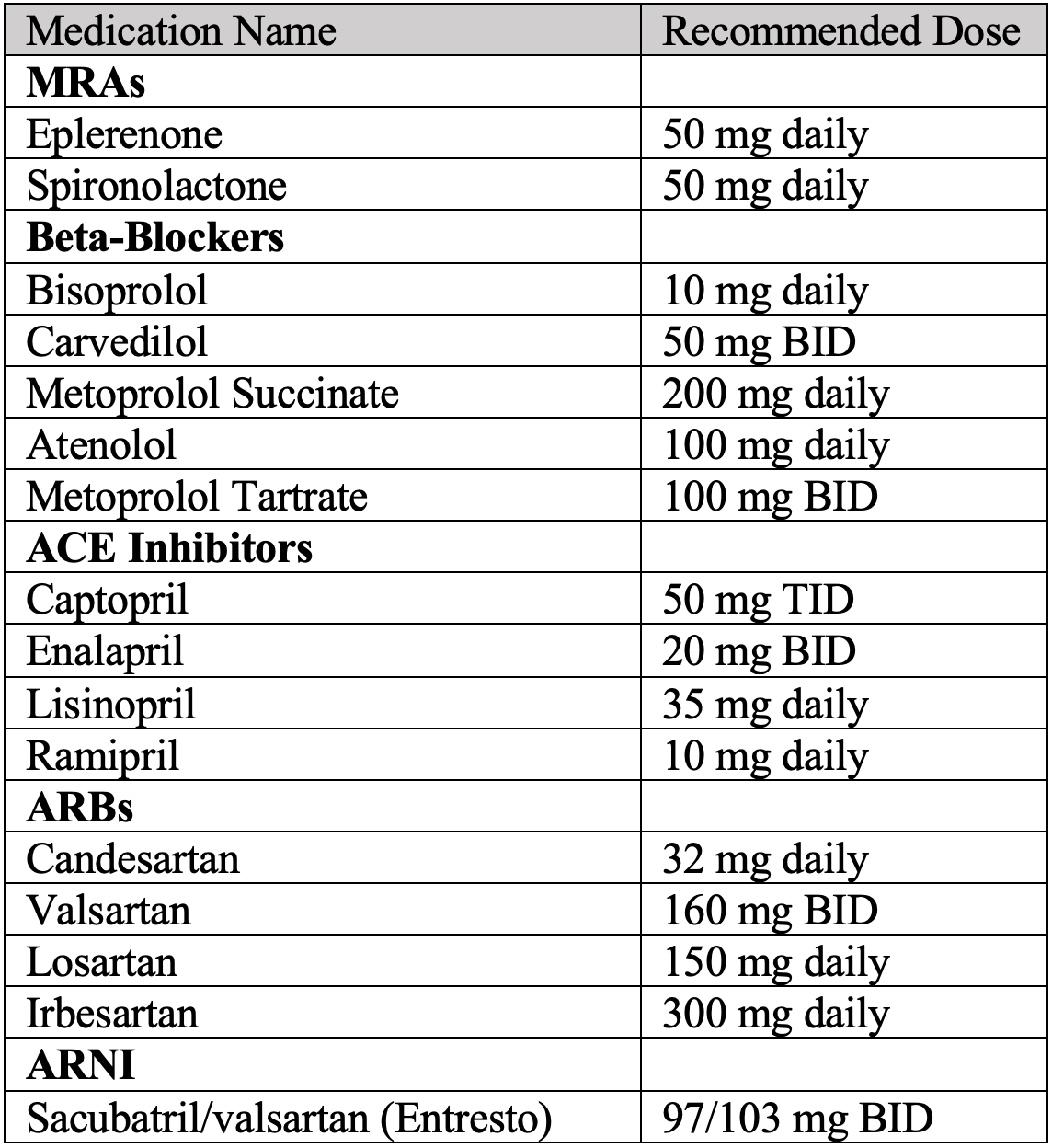Article
STRONG-HF Trial: Rapid Up-Titration of Heart Failure Medications
Author(s):
STRONG-HF aimed to study whether rapid-dose escalation of guideline-directed heart failure medications was more beneficial than usual care.
Current heart failure guidelines recommend early initiation and titration of heart failure medications and close outpatient follow-up for patients after hospitalization, but do not provide any specific recommendations. The STRONG-HF trial aimed to study whether rapid-dose escalation of guideline-directed heart failure medications was more beneficial than usual care.
Credit: blacksalmon - stock.adobe.com

Study Design
The STRONG-HF Trial is a multinational, open-label, randomized, parallel-group study that was completed from May 2018 to September 2022. Throughout the study period, 1008 patients were randomized and completed the study, with 506 patients in the “high intensity” group and 502 in the “usual care” group.
Patients were assessed for both safety and efficacy in an Intention-To-Treat analysis. Patients were stratified based on left ventricular ejection fraction (LVEF <40% and >40%), age at study initiation (categories of above/below 65 and 75 years of age) and geographic location.
The study followed guideline-directed therapy based on the 2021 European Society of Cardiology Heart Failure Association guidelines, which includes the use of renin-angiotensin blockers (ACE, ARBs, ARNI), beta-blockers, and mineralocorticoid receptor antagonists (MRAs). It is important to note that at the time of study initiation, SGLT-2 inhibitors had not yet been FDA-approved for heart failure, so they were not included in the analysis.
Patients
Inclusion Criteria
- 18-85 years of age.
- Heart failure hospital admission within 72 hours before screening.
- Not treated with recommended doses of heart failure medications within 48 hours of hospital discharge.
Exclusion Criteria
- Intolerance or contraindication to guideline directed therapies.
- Past medical history of significant pulmonary, kidney (eGFR <30 ml/min), or liver disease.
- History of a stroke/TIA, MI, unstable angina, or cardiac surgery within the past 3 months.
- Life expectancy <6 months due to comorbidities, such as psychiatric/neurological disorders, cirrhosis, or active cancer.
Demographics
The average age of patients was 63 years, 61% of patients were male, and 77% Caucasian. Common comorbidities were diabetes (29%), acute coronary syndrome (31%), and history of atrial fibrillation/flutter (46%).
Eighty-five percent of patients had a previous diagnosis of heart failure prior to hospitalization. The most common NYHA Class before hospitalization was Class III (42%) and patients had an average LVEF of 36.3% at baseline.
Interestingly, 95% of patients were on an MRA and 96% of patients were on a loop diuretic prior to the study. Only 64% of patients were on an ACE/ARB/ARNI and 36% were on a beta-blocker.
Procedures
Usual Care Group
Upon hospital discharge, patients were follow-up based on the local practice standards until day 90. At day 90, patients were assessed by the study team. On average, patients had only 1 follow-up visit during the first 90 days.
High Intensity Group
The goal treatment algorithm in this group was to complete the first dose adjustments to half of the recommended doses within 2 days before hospital discharge. Then, patients were assessed for safety and efficacy at weeks 1, 2, 3, and 6.
By the week 2 follow-up, the goal was to have patients on the full optimal doses of guideline-directed therapies if safe and tolerated by the patient. By the end of the first 90 days, patients had an average of 4.8 follow-up appointments.
Pertinent labs were also completed as each follow-up visit. Additional medications, such as diuretics, were dose adjusted on an as needed basis and were patient-specific.
Doses were not increased if the patient had any of the following findings upon assessment:
- ACE/ARB/ARNI/MRAs:
- Systolic BP <95 mmHg
- Potassium >5.0 mmol/L
- eGFR <30 ml/min
- Beta-blockers:
- Systolic BP <95 mmHg
- Heart rate <55 bpm
- NT-proBNP >10% increase from baseline
Optimal Doses of Common Guideline-Directed Therapies

By day 90, the patients in the high-intensity group had a much higher incidence optimal doses than the usual care group.
- Renin-angiotensin blockers: 55% vs 2%
- Beta-blockers: 49% vs 4%
- MRAs: 84% vs 46%
Of note, SGLT2 inhibitors were prescribed in some patients who were enrolled later in the study (10% in the high intensity group vs 5% in the usual care group).
Efficacy Outcomes
Primary Outcome: 180-day heart failure readmission or all-cause death.
- 74 patients (15.2%) in the high intensity group vs 109 patients (23.3%) in the usual care group (P=0.0021).
- The primary endpoint was stratified into subgroups (age, LVEF, country) and the high-intensity regimen showed benefit in each.
This study was completed during the peak of the COVID-19 pandemic, which may have increased all-cause death in this population. The primary endpoint was also calculated to exclude any COVID-19-related deaths, and the results were still statistically significant in favor of the high intensity treatment group (14.1% vs 23.0%).
Secondary Outcomes
- Change in quality of life (EQ-5D VAS): 10.72 vs 7.22 (P<0.0001).
- Health-related measure of quality of life on a scale from 0-100 with a higher score translating to better patient reported quality of life.
- 180-day all-cause death: 8.5% vs 10.0% (P=0.42).
- 90-day heart failure readmission or all-cause death: 10.4% vs 13.8% (P=0.081).
Safety Outcomes
Treatment-emergent adverse events (AEs) at day 90 were 41% in the high-intensity group vs 29% in the usual care group.
- Hypotension: 5% vs <1%
- Hyperkalemia: 3% vs 0%
- Renal impairment: 3% vs <1%
- Serious AEs (cardiac failure, sudden death, pneumonia): 16% vs 17%
It is important to note that there is a potential bias in the high-intensity group, as these patients were seen more often in clinic, so it was more likely that they would detect and report an AE.
Laboratory Values and Vital Signs
There were statistically significant decreases in blood pressure, heart rate, respiratory rate, body weight, peripheral edema, jugular vein pressure, total bilirubin, and NT-proBNP in the high intensity group. There was also a statistically significant increase in potassium levels in the high-intensity group, with an average change of 0.32 vs 0.17 mmol/L.
Discussion
The STRONG-HF trial shows a significant benefit and minimal safety concerns with rapid dose titration of guideline-directed heart failure therapies in recently hospitalized patients compared to usual care. The study was stopped earlier than anticipated due to the significant benefit that was shown early on.
The investigators reported that it was unethical to continue with the usual care arm because patients were not receiving beneficial treatments. This study also includes a diverse population of patients with both preserved and reduced ejection fraction heart failure and had a large sample size, so it has good external validity.
Some limitations to the study include potential bias in AE reporting and the open-label design. Another limitation was the exclusion of SGLT-2 inhibitors due to the recent FDA approval.
There were more patients in the high-intensity group who were started on SGLT2 inhibitors, likely due to more frequent follow-up appointments. Even though they were not included in the primary endpoint analysis, they may have contributed to the benefit shown in the high intensity group.
Conclusion
The STRONG-HF trial should be used as a framework for providers and pharmacists that are managing guideline directed heart failure medications. Rapid dose titration and close follow-up and monitoring within the few weeks following hospitalization should be implemented where able to provide the most benefit for heart failure patients.
Reference
Mebazaa A, Davison B, Chioncel O, et al. Safety, tolerability and efficacy of up-titration of guideline-directed medical therapies for acute heart failure (STRONG-HF): a multinational, open-label, randomised, trial. Lancet. 2022;400(10367):1938-1952. doi:10.1016/S0140-6736(22)02076-1
Newsletter
Stay informed on drug updates, treatment guidelines, and pharmacy practice trends—subscribe to Pharmacy Times for weekly clinical insights.






